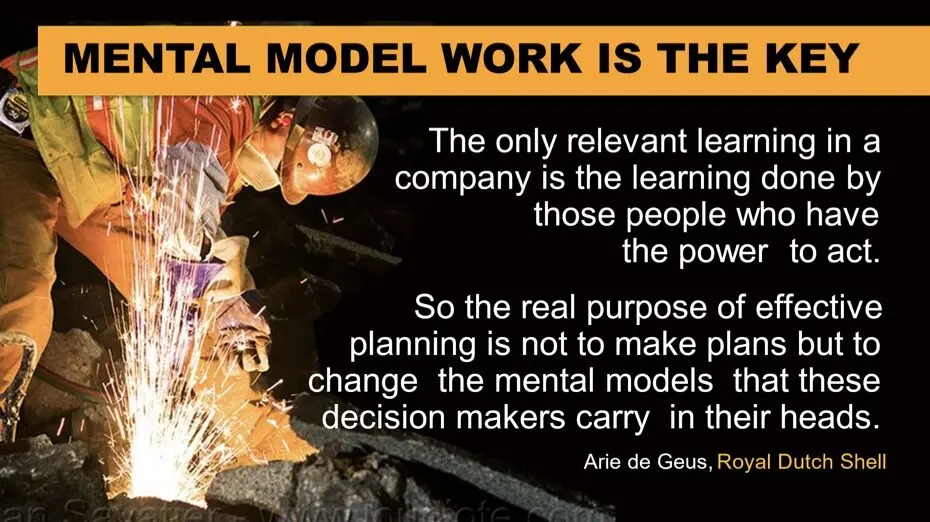
Mental Model Shifts: The Key to Organizational Transformation
Learning from Business Leaders
The Greater Arvada Chamber of Commerce sponsors a Business Collaborative Network on the second Thursday of every month. At these sessions, small business leaders share their life journeys that led to their current success. The power of each unique story is remarkable. In my last blog, I shared the importance of utilizing and developing your staff’s Personal Practical Knowledge (PPK).
Each Business Collaborative story demonstrates the transformative power of harnessing PPK. How often does your organization create opportunities to collect, utilize, and grow the practical knowledge from your staff’s lived experiences?
Mental Models Drive Organizational Behavior
When we operate from our PPK, our behaviors align with our beliefs. These beliefs, values, and assumptions that underlie our actions are commonly known as mental models. No meaningful change can take root if your team’s lived experiences (PPK) and their core beliefs and values (mental models) have been disregarded or undervalued.
We all know that reaching your current position wasn’t easy. Genuine progress requires mental model shifts. Throughout my career, I’ve often found myself staring at our biggest obstacle to changing in the mirror—my own resistance to shifting mental models. This is the profound challenge of organizational leadership: not only changing our own mental models but guiding our entire staff to shift theirs, both individually and collectively.
Reflection question: Can you identify the specific mental model shifts that have propelled your organization to its current position? Take a moment to write them down.
Now consider two deeper questions:
- Did these mental model shifts happen by accident, or were they deliberately planned?
- Can you articulate the evolution of these mental model shifts within your organization?
Action Learning Cycles: The Engine of Mental Model Shifts
Our mental models determine organizational culture. This might sound simple, but how do you bring these models to conscious awareness? What new mental models are being lived out in your organization today?
Challenging staff to engage in conscious mental model work generates tremendous synergy that drives progress. This is why strategic planning requires careful consideration. If we fall into the “events trap” and waste resources on one trend after another, we miss the opportunity to embed lasting mental models into our organizational culture. Mental model shifts happen when we gain actionable knowledge—new PPK.
Designs for staff mental model shifts must provide opportunities to practice repeatedly. Ed Schein describes “practice fields”: safe spaces within an organization where people are free to fail and learn from those failures. Another business principle is to “stick to your knitting” don’t disrupt your core business but experiment at the edges.
Ask yourself: What has your experience been with establishing practice fields where staff can safely test new mental models? How have you experimented at the fringes and then incorporated successes into your core operations?
Action Learning that influences mental model behavior is essential for organizational progress. Once you begin cycling through iterations, change builds energy and momentum. Your data expands, decisions become more evidence-based, and you develop flexibility to let emerging information guide your direction. Every action either challenges or reinforces staff mental models.
The key is inviting staff to reflect and act again. Powerful action learning that catalyzes mental model shifts requires iteration after iteration. What mental model shifts are you targeting for 2025?
Understanding Delays: The Time Factor in Transformation
Two realities of organizational improvement remain constant:
- Improvement will always correlate with the mental model shifts of your staff.
- Mental model shifts occur gradually; there will always be a gap between initiating work on a mental model and seeing the results once it’s embedded.
There are no quick fixes for mental model shifts. Managing time to minimize delays is a leadership priority. How do you determine the timespans in your planning? What lessons have you learned about timing? What relationship have you discovered between timing and sequencing? Do you implement linear sequential designs or parallel approaches?
Our experience shows that a mental model shift in an organization requires, at minimum, one year. Most shifts take two to three years to become firmly embedded in the organizational culture.
It’s impossible for staff to manage more than two or three new mental models simultaneously. Any new initiative requires mental model shifts. A concern with rapidly improving organizations is that they may begin to feel invincible. They forget how long it takes to deeply embed mental models. As John Kotter warns us, declaring victory too early is a significant danger.
Remain vigilant. As Hoy, Gage, and Tarter remind us: “Mindful administrators know that ‘believing is seeing,’ and they are on guard—wary of the obvious and ‘searching for the danger not yet arisen.’ They are suspicious of facile explanation as well as their own success.”
Bill Martin and Associates has developed a unique set of models, processes, and tools to support organizational mental model shifts. We create powerful alignment with all staff to meet your organizational mission and vision. Contact us today.
Keep smiling,
Bill